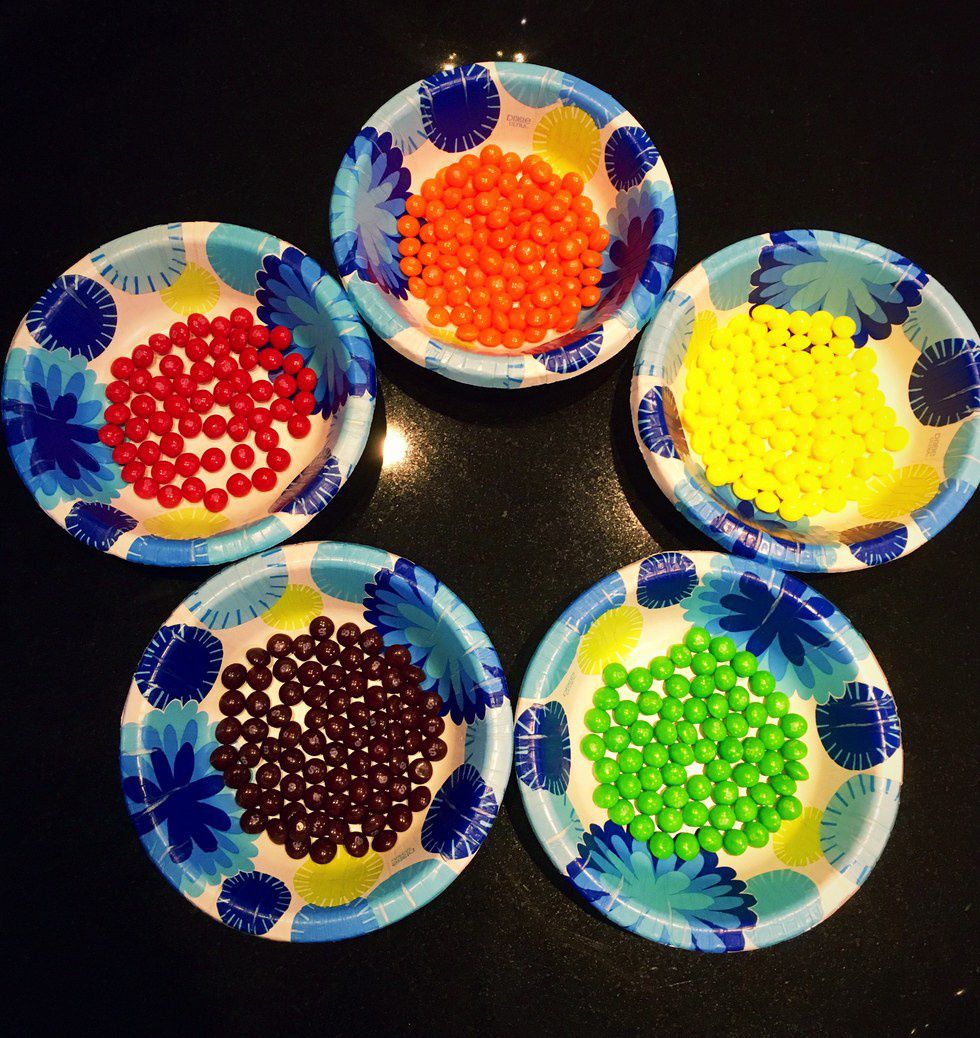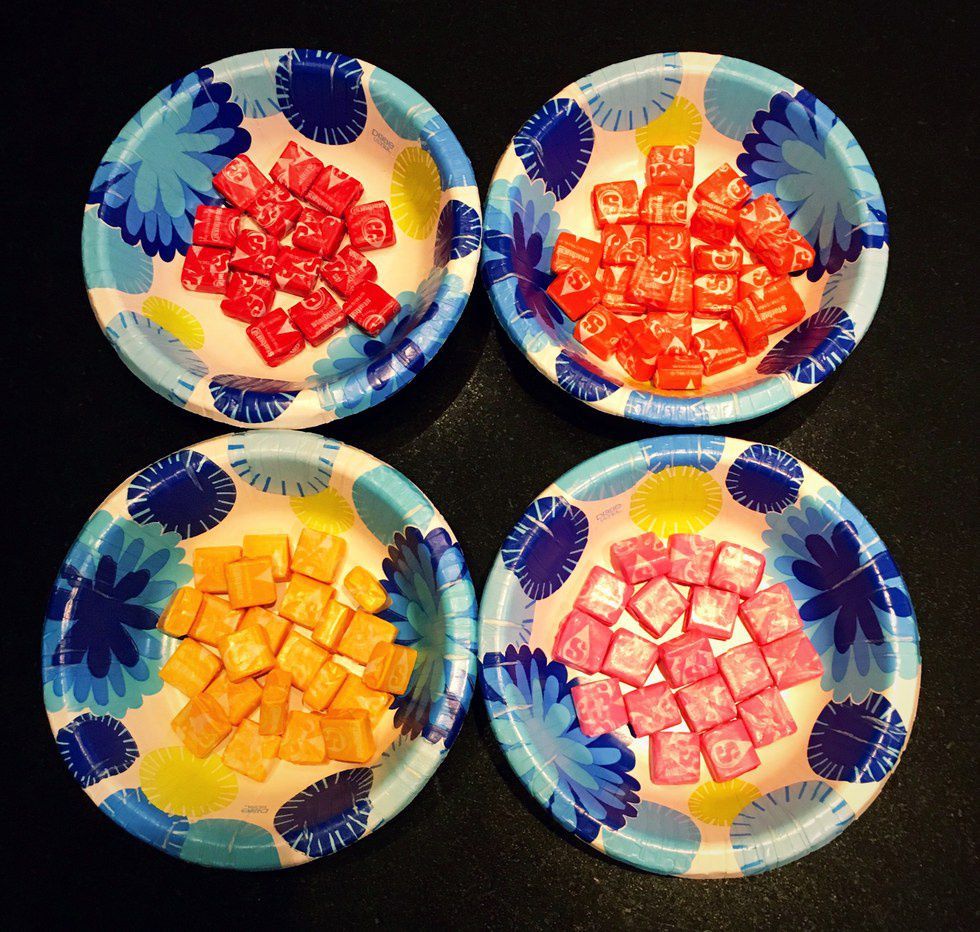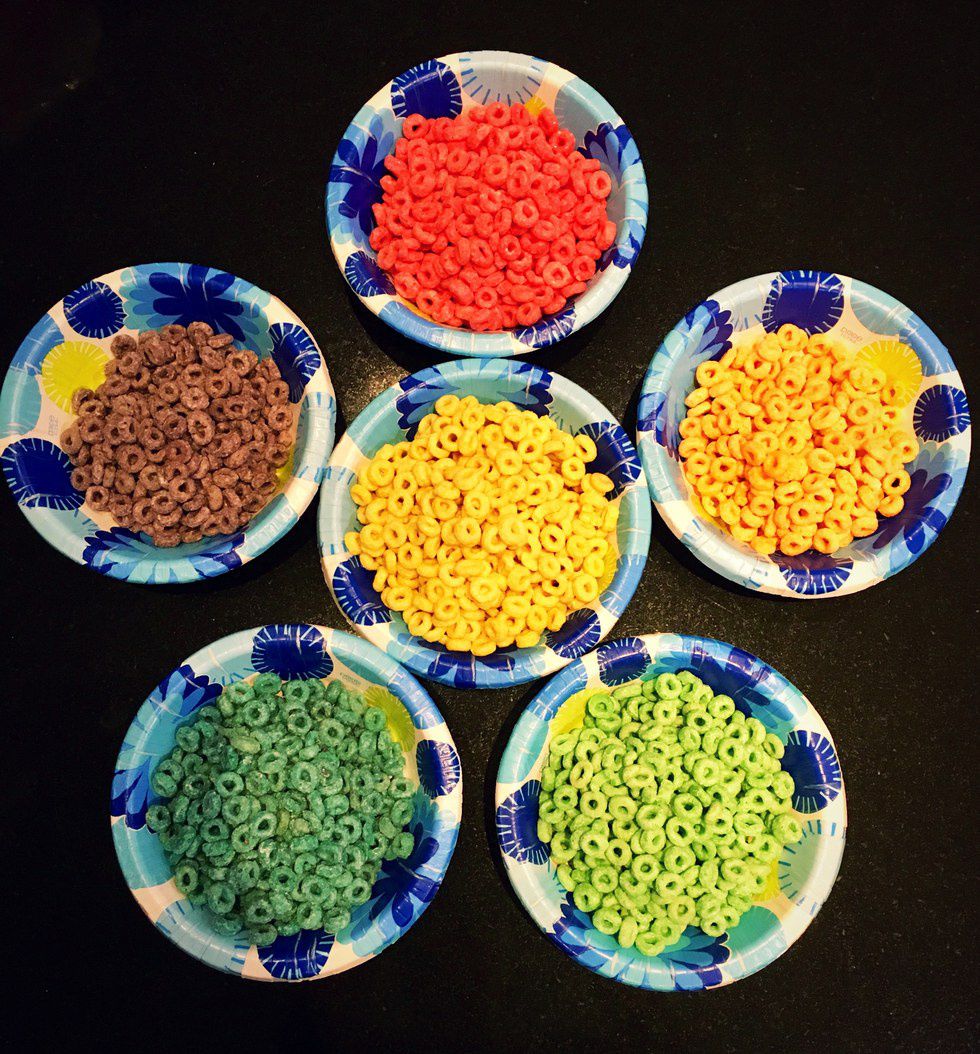This week while I was reading nonsense articles online to kill time, I came across one by a disgruntled Skittle customer who got too many yellows in their bag. After more research, I found that a lot of people have this complaint. The online community has deduced that the extra yellows are to make the bag look brighter and more appetizing. I decided that I had to test this out myself to see if it really is true, but then I got to thinking, is this something all companies do? From that, was born ~The Skittles Hypothesis~; too see if the hype is real, I'll test it with Skittles, Starbursts, and Froot Loops. I also just wanted an excuse to buy some family sized bags of candy for myself.
Skittles
Total in the Bag: 387
Red: 58 14.98%
Orange: 90 23.25%
Yellow: 95 24.54%
Green: 66 17.05%
Purple: 78 20.15%
The Skittles test confirms The Skittles Hypothesis, yay science!
Starbursts
Total in the Bag: 81
Red: 15 18.51%
Orange: 24 29.62%
Yellow: 2328.39%
Pink: 18 22.22%
So the Starbursts test doesn't perfectly confirm The Skittles Hypothesis, but it shows there's some truth to it. The yellows weren't the majority by only one candy and there are much more of them than the pink or the red.
Froot Loops
Total in the Box: 1957
Red: 374 19.11%
Orange: 243 12.41%
Yellow: 443 22.63%
Green: 369 18.85%
Blue: 318 16.24%
Purple: 210 10.73%
The Froot Loops test did its job and showed that theres a lot more yellows in that box and confirmed The Skittles Hypothesis.
The moral of the story here is that The Skittles Hypothesis reigns supreme and it makes sense. Why wouldn't companies want to make their food look more appetizing? Plus I got to have a lot of snacks along the way, so I'd call this experiment a win-win.





















